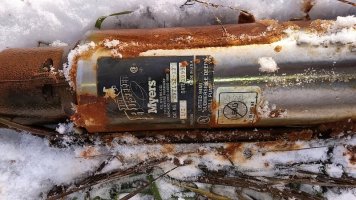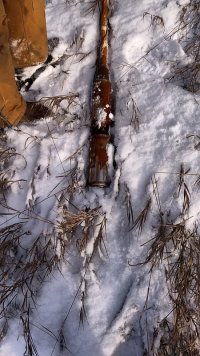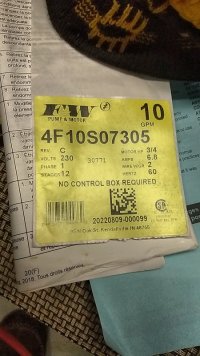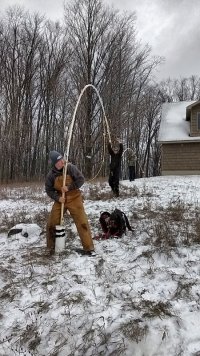Gary Bowling
gabo
I live in N. MI and have a submerged well pump. I am a pretty handy person, but know very little about wells and pump service.
A few days ago we noticed low pressure. Looking at the gauge in the basement, it reads about 20 PSI and doesn't change much. I really never hear the pressure switch turn on off. The pressure switch is a 30/50 switch, but I'm not sure if it was set to something lower. My water piping is 3/4 inch, so it may have been set lower.
When I turn the breaker to the pump off, with every faucet turned off, the water pressure goes down (eventually to 0) and I can hear water running backwards down to the well. So I think I have a backflow problem at the very least.
While the pressure was down, I checked the bladder pressure in the pressure tank. It was a little low at around 18psi so I added some are to about 27PSI. When I turned the pump back on that actually got the pressure gauge up to around 38-40psi.
I can't really tell when the pump is running other than some times seeing the pressure going back up a bit.
Something just isn't right about it and I'm concerned with the backflow like it is. Could the pump be running all the time due to the backflow problem?
I have called a well guy, but in this area they are really backed up, so I'm not sure when he can come check it. We get a lot of snow here and if we get into snow season before I get this fixed, I'm not sure a truck can get to the well. Would be a long winter without water, so I'm trying to address it now if possible.
Any advice would be welcomed. Thanks.
A few days ago we noticed low pressure. Looking at the gauge in the basement, it reads about 20 PSI and doesn't change much. I really never hear the pressure switch turn on off. The pressure switch is a 30/50 switch, but I'm not sure if it was set to something lower. My water piping is 3/4 inch, so it may have been set lower.
When I turn the breaker to the pump off, with every faucet turned off, the water pressure goes down (eventually to 0) and I can hear water running backwards down to the well. So I think I have a backflow problem at the very least.
While the pressure was down, I checked the bladder pressure in the pressure tank. It was a little low at around 18psi so I added some are to about 27PSI. When I turned the pump back on that actually got the pressure gauge up to around 38-40psi.
I can't really tell when the pump is running other than some times seeing the pressure going back up a bit.
Something just isn't right about it and I'm concerned with the backflow like it is. Could the pump be running all the time due to the backflow problem?
I have called a well guy, but in this area they are really backed up, so I'm not sure when he can come check it. We get a lot of snow here and if we get into snow season before I get this fixed, I'm not sure a truck can get to the well. Would be a long winter without water, so I'm trying to address it now if possible.
Any advice would be welcomed. Thanks.




